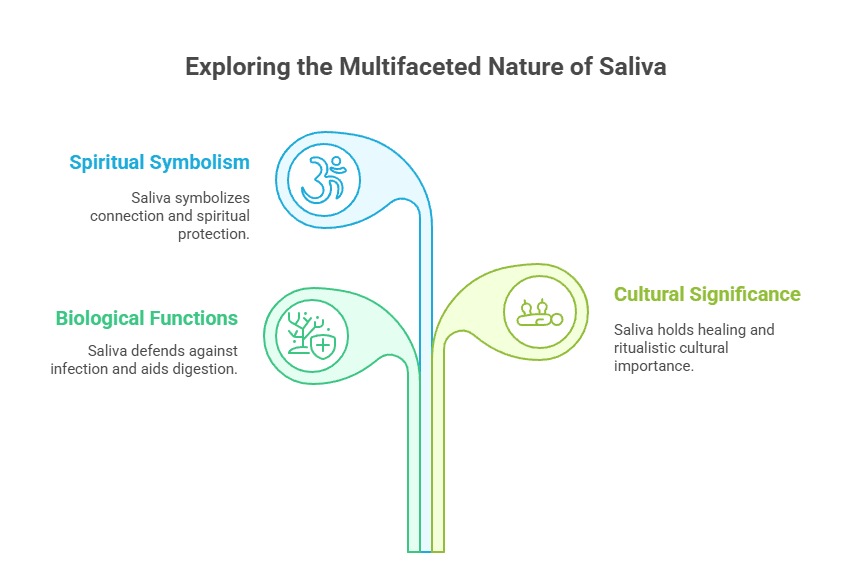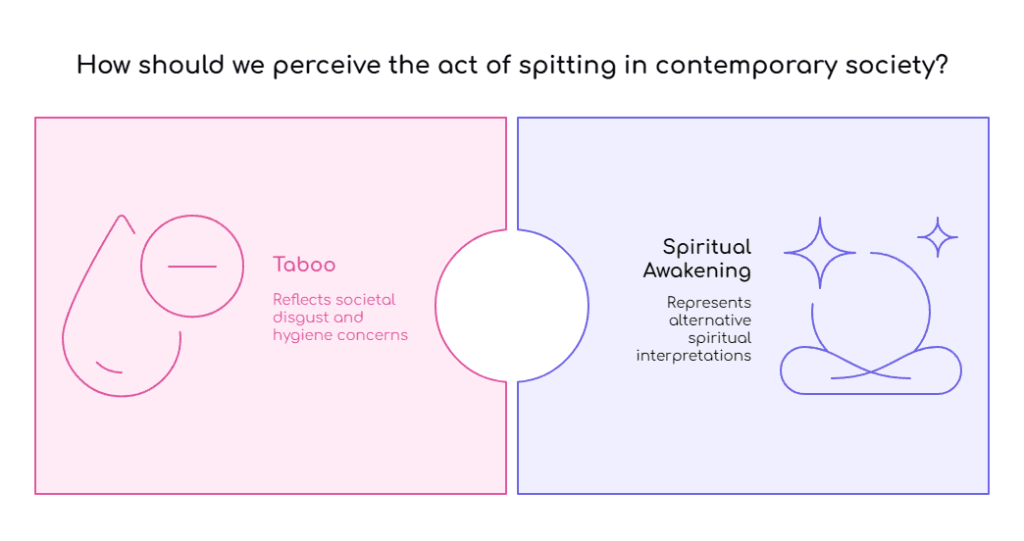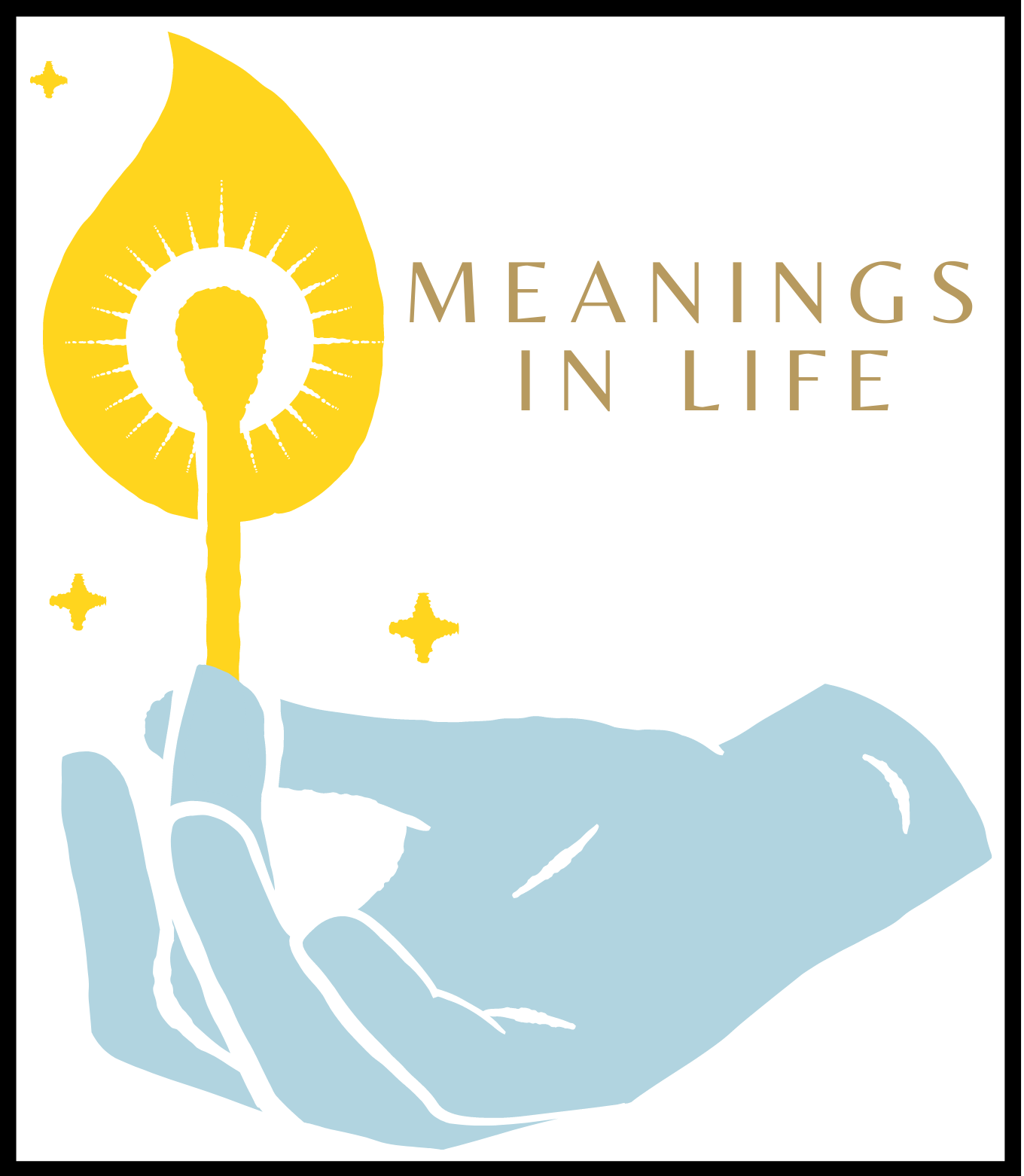Spiritual symbolism is a fascinating realm that has been woven into the tapestry of human existence for as long as we have been able to perceive and interpret our world. These symbols, often enigmatic and steeped in cultural significance, serve as unique vessels carrying profound messages from the metaphysical realms.
They act as a bridge, connecting our tangible physical world with the ethereal spiritual world. In every culture, community, and creed around the globe there exists an array of these spiritual symbols.
Some are commonplace like the cross in Christianity or Om in Hinduism. Others are found in nature like trees symbolizing growth or butterflies epitomizing transformation.
Yet others are embodied through actions such as lighting a candle for enlightenment or ringing a bell to ward off evil. However, understanding these symbols is not always straightforward.
Their interpretation calls for an expansive understanding of cultural contexts and historical backgrounds that inject them with meaning. The same symbol may bear different meanings across cultures or even within different time periods of the same culture!
Mingling Saliva and Spirituality: Spitting as A Sacred Act?
Now let us delve into one such unconventional yet profoundly symbolic action – spitting! Yes, you heard it right – spitting! At first glance, it might seem repugnant, uncouth even but let’s shed those preconceptions for a moment and journey back to ancient times where saliva was considered sacred.
Our ancestors did not view saliva merely as an enzyme-containing fluid aiding digestion but rather appreciated its symbolic aspects too. Some tribal societies believed that saliva was charged with life force because it came from within us and therefore held potent healing properties.
The act of spitting thus transcended its literal connotation to become associated with various spiritual rituals across cultures ranging from blessing ceremonies to healing practices. Interestingly enough, one particular ritual involving spitting that caught my attention was – spitting into someone’s mouth!
Sounds bizarre? Well, spirituality often treads on a path less travelled and we will uncover the hidden spiritual symbolism behind this unusual act in the subsequent sections of our exploration.
Spitting: A Historic Liquid Liaison
Ancient cultures often had an array of unusual practices which, to the modern eye, might seem perplexing. One such practice is spitting as a spiritual act. The act of spitting, simple as it might seem, held profound significance in numerous ancient societies.
In Aboriginal Australian tribes, for instance, saliva was considered one’s life force or spirit. To spit into someone’s mouth was akin to bestowing them with part of your spirit or essence.
Similarly, among the Maasai people in Africa, elders would spit on their palms before offering a hand to shake – a gesture of goodwill and blessing. The Greeks and Romans also held saliva in high regard.
They believed that it had healing properties and used it in various medicinal concoctions. Moreover, parents would often spit on their children to ward off evil spirits or bad luck; even today, some Greek grandmothers continue this practice.
Past Rituals: Savoring Saliva’s Spiritual Significance
Spitting has found its way into several rituals across different cultures due to its perceived spiritual properties. Let’s delve into some specific examples where spitting played a pivotal role within these cultural ceremonies.
The Inuit people practiced kunik – a traditional greeting where individuals press their noses against another person’s skin while simultaneously exhaling; this could be seen analogous to the intimate gesture of spitting into someone’s mouth given the close contact between breaths (analogous to saliva) and individuals involved. In some African communities such as the Dinka tribe in South Sudan or Tonga tribe in Zambia , when blessing marriages or births, elders would chew roots from certain sacred trees and then spit this mixture onto the couple or newborn child for protection against evil spirits and misfortune.
Perhaps most surprising is that even Christianity has references related to spitting! In Mark 7:33 and John 9:6 of the Bible, Jesus is recorded to have spit on deaf and blind men respectively to cure them of their ailments.
This further underscores that the act of spitting, particularly in the context of healing, has deep roots in our collective spiritual history. These instances from ancient cultures illuminate how spitting, while seemingly a mundane bodily function, can hold profound significance within a spiritual and symbolic framework.
The Spit: More Than Just Saliva

An Unexpected Treasure: The Science of Saliva
The human body can be a source of boundless fascination, and the production of saliva is no exception. This seemingly mundane bodily function serves as our first line of defense against infection, keeps our oral tissue healthy and even kick-starts the process of digestion. Composed primarily of water, it also contains electrolytes, mucus, glycoproteins, enzymes and antibacterial compounds.
In essence, saliva is a biochemical marvel designed for survival. In various cultures throughout history and into the present day, saliva has been considered a critical element in healing practices.
For instance, in traditional African cultures, it’s not uncommon to use saliva in rituals aimed at healing wounds or ailments. Similarly, Australians Aborigines have often employed spittle as part of their curative procedures.
Saliva carries an emotional connotation too. Since it’s generated within us and excreted outwards into the world—much like thoughts or feelings—it’s seen as a physical extension or manifestation of inner self in some traditions.
A Symbolic Faucet: The Spiritual Facets of Spitting
When we transition from the purely physiological to the metaphysical realm—that is where things get truly intriguing. Spit isn’t merely spit; it becomes a conduit for energy transfer—a vessel for intentionality and expression.
In many ancient societies such as Greece and Rome, spitting served an apotropaic function—it was believed to ward off evil spirits or bring luck to its recipients. It was also used in swearing oaths; when two parties made a pact or agreement they would each spit on their own palms before shaking hands—an act indicating that they were bound by honor to fulfill their agreement.
Today these beliefs might seem quaint or primitive but they represent human efforts at making sense out of natural phenomena. This tendency to find meaning and narrative in the world around us is an intrinsic part of our species, a testament to our ability to weave together the threads of the mundane and the spiritual into a coherent tapestry that helps us navigate life with wisdom and purpose.
While it may seem odd at first glance, even spit can be a symbol imbued with profound spiritual significance—an emblem of connection, of solemn vows, and divine protection. To understand this better, we need to delve deeper into its role in specific cultural contexts—the subject that we will explore next.
Spitting Into Someone’s Mouth: An Intimate Exchange

The Symbolism Behind Mouth-to-Mouth Interactions
In the realm of spiritual symbolism, the mouth holds a multifaceted significance. It is not only seen as an instrument for speech and sound but also as a vessel of nourishment, breath, and life force.
When two mouths interact, whether through kissing or other forms, it symbolizes the intimate exchange of these life forces. The act of sharing breath, particularly through mouth-to-mouth contact is profound in many cultures.
It’s viewed as a potent gesture of trust and unity. In some traditional societies like the Maori people of New Zealand, the sharing of breath (hongi) represented a significant spiritual bond akin to becoming one.
Conversely, in some mystical traditions such as Tantra Yoga or certain Sufi practices, breath exchange during particular rituals is considered an essential technique for spiritual awakening or enlightenment. Therefore in exploring this dynamic act one can’t disregard the profound impact that mouth-to-mouth interactions have within our collective spiritual consciousness.
Unraveling the Meanings Behind Spitting into Someone’s Mouth
When we take this understanding and apply it to spitting into someone’s mouth, we enter intriguing dimensions of symbolism. Most obviously perhaps is the notion that spit carries our DNA – our very essence – so to spit into someone’s mouth could be seen as a deeply personal exchange.
The act holds different meanings across diverse cultures worldwide. Among some African tribes, for instance, spitting into another person’s mouth was used in blessings and initiations; representing transferrence of power or bestowal of protection from elders to younger generations.
It’s interesting how something commonly regarded with distaste in mainstream society can hold such profound significance within these cultural contexts. Moreover, the act of spitting into someone’s mouth could also symbolically represent a form of rebirth or spiritual awakening.
As an uncommon act, it disrupts our everyday norms and jolts us into a heightened state of consciousness. It forces us to confront any discomfort associated with societal taboo and challenges us to see beyond the veil of what’s conventionally acceptable.
Interpretations Across Cultic and Religious Landscape
The act of spitting in someone’s mouth is not limited to a particular culture or religion. It is, indeed, an intriguing phenomenon that spans multiple cultures and religious beliefs. For instance, in some African cultures, spitting holds significant ceremonial and spiritual weight.
Elders often spit as a form of blessing or purification. This act is seen as transferring spiritual power or wisdom from one person to another.
In the Maasai tribe of Kenya and Tanzania, this ritual is quite common. When children are leaving home, elders spit on their heads and breasts as a form of blessing for safe travels.
However, it’s essential to remember that these practices vary significantly across different tribes even within the same geographical area. Turning our gaze towards Australian Aboriginal tribes – here too, we find intriguing rituals involving saliva exchange.
Aboriginal people believe that every person possesses a life-giving essence known as ‘Kurunpa’. The elders transfer their Kurunpa to youngsters by spitting into their mouths – they see it as passing down spiritual wisdom.
Examining Spit Symbolism in Christian Lore and Indigenous Beliefs
While many indigenous cultures see spitting as positive spiritual interactions, mainstream religions like Christianity have varied views on this subject matter. In the Bible’s New Testament (John 9:6), Jesus famously healed a blind man by spitting on the ground to create mud and applying it onto the man’s eyes.
Herein lies an intimate connection between spit (as representative of divine life force) being used for miraculous healing events. However, other religious texts within Christianity associate spitting with humiliation or disrespect – such was the case when Roman soldiers spat upon Jesus during his crucifixion (Matthew 27:30).
Therefore even within one religion – there is no monolithic interpretation. Instead, these varying perspectives provide fascinating insight into how a singular act can hold multiple, often contradictory, meanings.
Within various Indigenous beliefs, spitting rituals are also prevalent. Among Native American tribes, saliva has played an integral part in numerous traditional rites and ceremonies.
For instance – spit was used in blessings, curing rituals and even during tobacco praying ceremonies. The act of spitting carried heavy symbolic weight – as a conduit for transferring spiritual energy or as a means of communicating with the divine realm.
Modern Day Perceptions: From Taboo to Spiritual Awakening

The Dichotomy of Perception: The Mundane Versus the Celestial
For many, the thought of spitting into someone’s mouth, regardless of context, would be met with immediate revulsion. Today, in our sanitised and sterile world, spitting is often seen as a gross breach of personal boundaries and an act degrading both to the spittee and the spitter. It’s generally considered disrespectful and unsanitary due to the potential for disease transmission.
However, this wasn’t always the case as we’ve explored in previous sections. This drastic shift in perception is largely tied to societal norms evolving over time.
As medical knowledge expanded and hygiene habits changed dramatically over centuries, acts once seen as significant or spiritual have been relegated to taboo status. Nonetheless, while mainstream society may view such a practice with distaste or outright disgust, there are still pockets where old traditions persist and new ones thrive.
Eccentric Rituals: Modern Subcultures Breathing Life into Ancient Practices
In various modern subcultures around the world where spirituality takes on diverse forms beyond organized religion; alternative perceptions persist. For instance, some practitioners within Neo-Paganism or New Age movements may embrace such practices as part of their unconventional path towards enlightenment or spiritual awakening. Recent reports have also highlighted certain celebrity circles engaging in similar practices for alleged spiritual purposes – demonstrating that despite mainstream aversion, such acts continue to hold an intriguing allure for some sections of society.
While these instances are far from widespread acceptance (and indeed often face backlash), they serve as potent reminders that what we perceive as ‘normal’ or ‘acceptable’ can be wildly different across cultures – even within our own. An interesting example can be found in certain tribes throughout Africa where variants of such practices are still performed today albeit under specific circumstances.
The Maasai tribe in Kenya for instance, practice a form of spitting as a form of blessing or good luck. The act, while not directly into the mouth, still carries significant spiritual implications.
Taboo to Transformation: A Journey Beyond Conventional Boundaries
While society may have largely moved on from such practices, they still hold an undeniable historical and cultural significance that cannot be dismissed outright. The taboo associated with spitting into someone’s mouth is just one facet of our vast human history; a testament to the evolution of societal norms and how our perceptions can change drastically over time. Even in our times where it’s seen as more taboo than spiritual, this unusual practice serves as a stark reminder of humanity’s diverse interpretations of spirituality throughout history.
It challenges the boundaries we’ve set for ourselves and asks us to look beyond initial reactions and delve deeper into understanding its profound implications. In doing so, we unravel layers upon layers revealing not only about our past but also about who we are today; diverse beings with varied beliefs navigating through life using different pathways towards understanding existence and finding meaning.
Conclusion: Understanding the Complexity of Spiritual Symbolism
Unraveling the Intricacies of an Unusual Spiritual Symbol
Reflecting on our journey through this curious realm, we have delved into the depths of spiritual symbolism, specifically focusing on the act of spitting into someone’s mouth. Initially perceived as unconventional and perhaps unsettling, this action has unraveled a knotted tapestry of cultural meanings and historical significance.
Its roots stretch back to ancient civilizations where it was a ritualistic practice imbued with power and respect. It then evolved across cultures and religions, each lending their unique interpretation to this profound act.
We have dissected saliva itself, not merely as a biological component but as a carrier of life force with powerful metaphysical implications. Then we moved onto mouth-to-mouth interactions; transgressing boundaries, crossing into intimate territories that signified trust, transformation and intricate exchanges that spoke volumes about relationships within communities.
A Contemporary Lens on Ancient Practices
Stepping into present times, we navigated through modern perceptions that oscillate between taboo notions and spiritual awakening. The core idea here is to remember that context is key when interpreting any form of spiritual symbolism. While something might seem odd or even off-putting when viewed through the lens of contemporary social norms, they often hold deep significance in their original cultural context.
This brings us full circle to understanding why spitting in someone’s mouth could be considered sacred or spiritually significant in certain situations or societies. It embodies elements ranging from initiation rites to blessings; all seen through diverse cultural prisms.
Final Thoughts: Interpreting Symbols in Our Own Lives
Inviting Open-mindedness into Our Understanding
As we conclude our exploration, it’s worth pondering how many such uncharted symbols lie hidden beneath layers of societal norms waiting to be unearthed and understood. The key lies in maintaining an open mind, allowing ourselves to question, learn and grow without preconceived notions or prejudices.
Connecting with Our Spiritual Selves
Whether you choose to embrace these interpretations or explore your own meanings is an individual journey. Remember, spirituality is a personal path cloaked in subjectivity, and its symbols can be windows into our souls if we dare to look.
Conclusion
So let us not shy away from the unfamiliar but rather welcome it with curiosity. For it is through understanding the unknown that we truly enrich our spiritual lives. With newfound wisdom about this unusual spiritual symbol, let’s carry forward this perspective – viewing not just spitting but all acts as potential carriers of profound meaning and hidden narratives waiting to be discovered.




